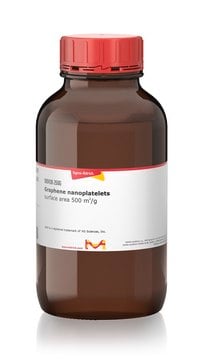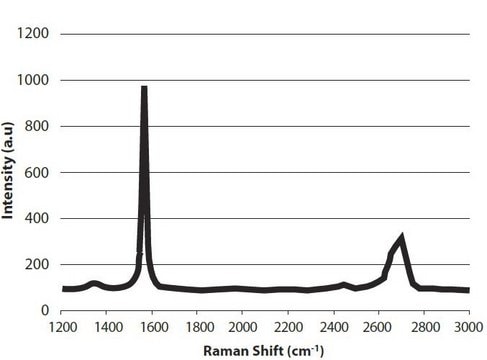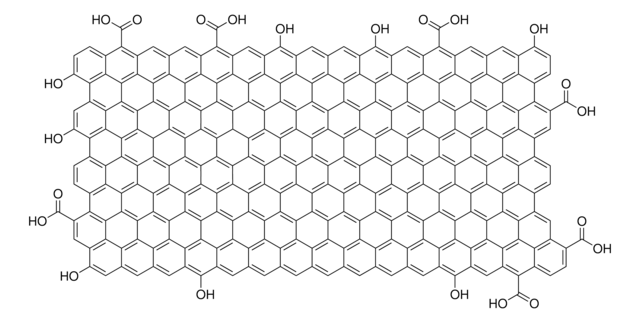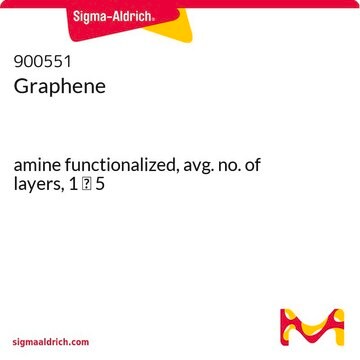806625
Graphene nanoplatelets
powder, polycarboxylate functionalized, hydrophilic
Synonym(s):
GNPs, graphenit-HYDRO
About This Item
Recommended Products
description
Dispersibility: water (high stability in aqueous medium)
Quality Level
form
powder
composition
Carbon, >70 wt. %
Oxygen, >10 wt. %
Looking for similar products? Visit Product Comparison Guide
General description
Application
- Graphene (nano)composite materials
- Conductive coatings
- Conductive Inks
- Energy Storage
- Electrode materials
Signal Word
Warning
Hazard Statements
Precautionary Statements
Hazard Classifications
Eye Irrit. 2 - STOT SE 3
Target Organs
Respiratory system
Storage Class Code
11 - Combustible Solids
WGK
WGK 3
Flash Point(F)
Not applicable
Flash Point(C)
Not applicable
Certificates of Analysis (COA)
Search for Certificates of Analysis (COA) by entering the products Lot/Batch Number. Lot and Batch Numbers can be found on a product’s label following the words ‘Lot’ or ‘Batch’.
Already Own This Product?
Find documentation for the products that you have recently purchased in the Document Library.
Articles
3D printing is a type of additive manufacturing that can be used to rapidly fabricate components with highly customizable geometries.
Since its discovery little more than a decade ago,1 the two-dimensional (2D) allotrope of carbon—graphene—has been the subject of intense multidisciplinary research efforts.
Our team of scientists has experience in all areas of research including Life Science, Material Science, Chemical Synthesis, Chromatography, Analytical and many others.
Contact Technical Service








